
Grand Canyon National Park 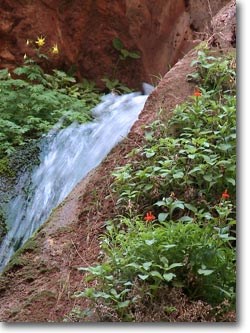
Bristlecone Media In a cool side canyon the sound of dripping waters mixes with the cascading notes of canyon wren. Columbine nod and bob in the slight down-canyon breeze. Tiny rivulets run between delicate shooting stars, maidenhead fern, and scarlet monkeyflower then gather and continue, joining the roiling Colorado River where a California condor stoops to drink. 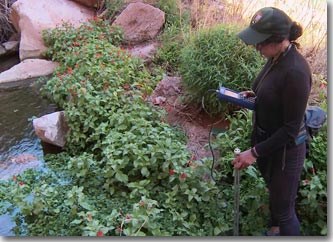
From "Hidden Waters" Bristlecone Media Water resource management has been pushed into the spotlight in response to the rapid population growth in the western U.S. over the past decade. This holds true for the area surrounding Grand Canyon National Park. 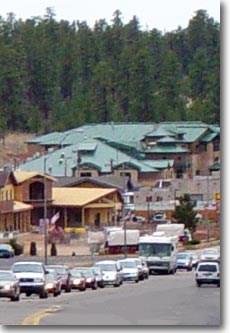
Grand Canyon National Park Previously, groundwater was obtained via wells from shallow aquifer systems on the Plateau, but due to increased demand, development of groundwater from the deeper regional aquifer that supplies these springs has accelerated in the last decade. Currently, Grand Canyon National Park does not add to this demand as its water supply is piped from Roaring Springs, which is on the Kaibab Plateau (North Rim). Currently, the vast majority of water used on the Coconino Plateau, from Flagstaff to Tusayan, including the water you drink at Grand Canyon, comes from one source: groundwater, either flowing from springs or pumped from wells.
Grand Canyon's research on springs and seeps is part of a larger regional examination of the Coconino Plateau's ability to sustain a water supply for its growing population. With the region's population predicted to double by 2050, there will be a corresponding decrease in water availability and an estimated unmet demand by 2025.
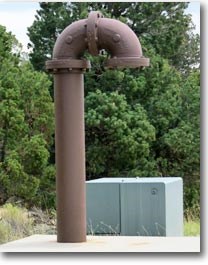
Grand Canyon National Park Models predict that water pumped from wells will affect Grand Canyon springs, but it is undetermined when, and to what extent. To answer such questions, researchers must gather data to quantify how much water is stored in the Coconino Plateau's aquifers, the age and amount of water discharging from springs and how, when, and where the aquifers are recharged. Whether replenishing desert willows or hot, thirsty hikers, the value of Grand Canyon's native waters is immense, and the need to protect them is strong. Grand Canyon's Springs and Seeps Study aims to provide quality science as the foundation for sound management strategies to protect the Park's native waters. 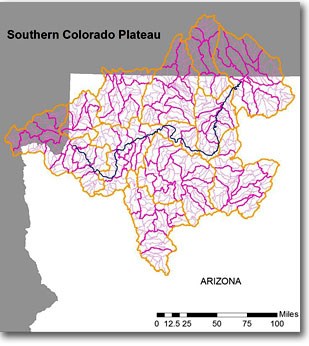
Precipitation falling on the Coconino (South Rim) and Kaibab (North Rim) Plateaus creates Grand Canyon's only native waters - waters derived in place - as they percolate through porous, faulted, and fractured rock units to discharge later as springs and seeps below the canyon's rim. Interestingly, no lakes, streams, or ponds form naturally on the plateaus; water is quickly recharged into the fractured Kaibab Formation, which caps the canyon and surrounding area. Below, porous rocks act as reservoirs and faults and fractures as conduits, while some rock units act as barriers to the movement of water. Aquifers are created when porous rock strata are bounded by less permeable rock layers (aquitards) that deter further seepage. When water reaches relatively impermeable layers such as the Hermit and Bright Angel Shales, it moves laterally along their surfaces until it discharges from canyon walls as a seep or spring. 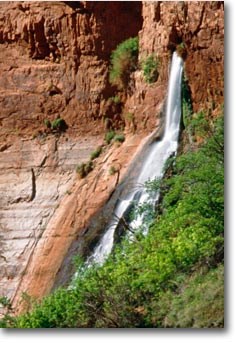
Grand Canyon National Park Grand Canyon springs and seeps emerge from canyon walls usually at the contact between an aquifer and an aquitard, and sometimes from ancient cave systems or joints in the rock that have been enhanced by dissolution from the movement of water. 
Modified from Flynn and Bills, 2002 The Biology of Native Waters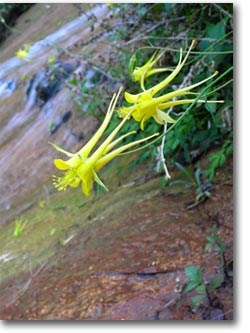
Grand Canyon National Park You smell it long before you arrive; feel it on the canyon breeze, hear it in the song of yellow warbler, the dizzy seesaw of a tree-frog chorus. You see it far off - the bright lime of cottonwood clutched under the rim; the sudden green of sedges and cattail around a canyon turn. At springs, species concentrations are 500 times greater than in surrounding desert lands. Even though springs are the proverbial oasis in the desert for both human and other-than-human, their ecology has not been fully studied at Grand Canyon. The impact of regional pumping on the water quantity and quality of these delicate and rare ecosystems is unknown. Scientists do know that when springs dry up, so do the species that depend on them. 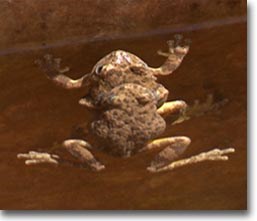
Bristlecone Media To date, researchers have discovered that each spring is unique and supports a distinctive array of flora and fauna, many of which are endemic (found nowhere else). For example, two South Rim springs are home to the only known white-flowering redbud trees; other springs host myriad butterflies previously unknown in Grand Canyon. Researchers have discovered that canyon floor springs, vulnerable to repeated flash floods, support an ephemeral biology, one that regenerates after each storm event. A hillside spring, protected from such violence, provides the time and stability needed for new species to evolve, and thus creates a biology unique unto itself. The Future of Grand Canyon's Native WatersThe coming age of water will have legal, social, and environmental implications for Grand Canyon National Park and much of the West. Additional pressures from drought and climate change will quite likely exacerbate impacts to water resources. The Springs and Seeps Study will develop management strategies to help minimize possible future impacts on the native water resources of Grand Canyon. The National Park Service mission, as stated in the 1916 Organic Act, is to conserve the scenery and the natural and historic objects and the wild life therein and to provide for the enjoyment of the same by such means as will leave them unimpaired for the enjoyment of future generations. This charges us to protect Grand Canyon's springs and seeps so they may continue to nourish the canyon’s plants and animals, refresh hikers, and maintain the erosive processes that created this magnificent canyon. Grand Canyon National Park
Visit our keyboard shortcuts docs for details
In Episode 02,"Hidden Waters," travel with scientists to explore springs hidden deep within Grand Canyon. The ecosystems of Grand Canyon's seeps and springs represent some of the most complicated, diverse, productive, provocative, and threatened ecosystems on earth. |
Last updated: December 10, 2022
